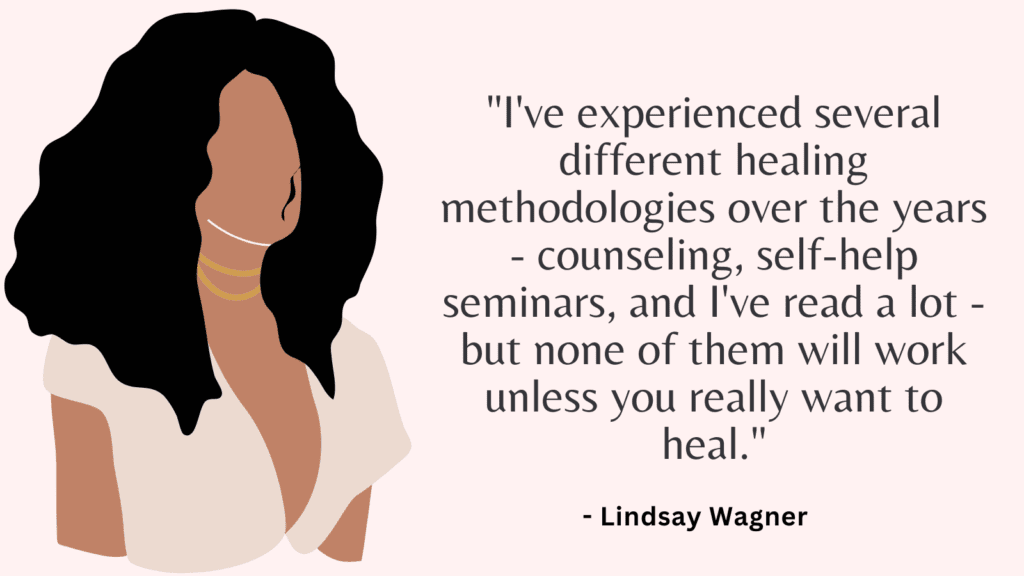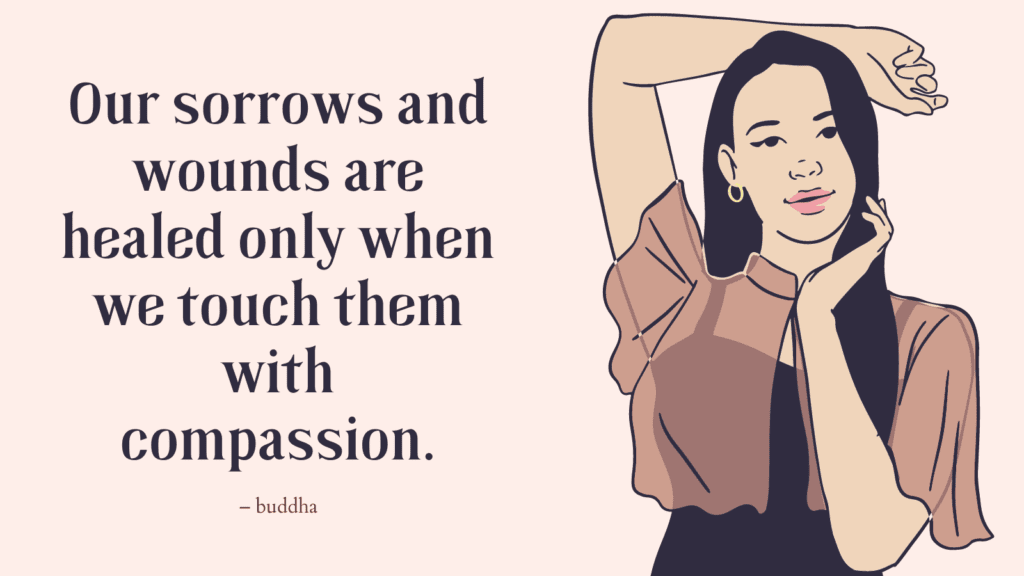This post contains some of the best techniques for dissociation.
What Is Dissociation?
Dissociation is a psychological defense mechanism that involves disconnecting from one’s thoughts, feelings, memories, and surroundings.
It is often described as a feeling of being disconnected or detached from reality.
Dissociation can occur in response to trauma, stress, anxiety, and other emotional experiences.
It can take many forms, including depersonalization (feeling like one is outside of their body), derealization (feeling like the world is unreal or strange), amnesia (forgetting important information), and identity confusion (losing a sense of self or feeling like one has multiple identities).
While dissociation can be a helpful coping mechanism in the short-term, it can become problematic if it interferes with daily life or hinders emotional growth and healing.
Related: Best 10 Proven Ways to Heal From Childhood Trauma Splitting
Symptoms of Dissociation
Here are some symptoms of dissociation:
1. Feeling detached from one’s surroundings.
2. Feeling detached from one’s emotions or having a limited range of emotions.
3. Feeling detached from one’s body or physical sensations.
4. Feeling as if one is observing themselves from outside their body or having an out-of-body experience.
5. Memory loss or difficulty remembering important information.
6. Feeling disconnected from one’s sense of self or identity.
7. Feeling as if one is in a dream-like state or foggy state of mind.
8. Feeling numb or emotionally unresponsive.
9. A sense of being disconnected from the present moment.
10. Engaging in risky or impulsive behavior without regard for consequences.
If you suspect that you might be experiencing dissociation, it is important to seek help from a mental health professional.
They can help determine the underlying cause and provide appropriate treatment.
Related: Do I Have Trauma? Top 4 Practical Exercises To Support Your Trauma Healing
Causes of Dissociation
Dissociation is a psychological coping mechanism that can be triggered by various factors.
Some of the most common causes of dissociation include:
1. Trauma or abuse: Experiencing or witnessing traumatic events, such as physical or sexual abuse, can lead to dissociation as a way to escape the overwhelming emotional pain.
2. Stress and anxiety: High levels of stress and anxiety can trigger dissociation as a means of self-preservation.
3. Certain medical conditions: Conditions such as epilepsy, migraines, and brain injuries can cause dissociative episodes.
4. Substance abuse: The use of certain drugs can induce dissociative states, such as hallucinogens and tranquilizers.
5. Personality disorders: People with dissociative identity disorder (DID) and borderline personality disorder (BPD) may experience dissociation as a symptom of their conditions. (*)
Note that everyone’s experiences of dissociation can be unique and caused by a combination of these factors.
Related: 7 Trauma Release Exercises To Support Your Recovery After Trauma
What Are Grounding Techniques?
Grounding techniques are strategies and exercises that help you focus on the present moment, increase mindfulness, and manage overwhelming emotions or thoughts.
These techniques can be used to reduce symptoms of anxiety, stress, PTSD, dissociation, and other mental health conditions.
Grounding techniques typically involve using your senses to connect with the environment around you or your body, creating a sense of safety and stability in the present moment.
Some examples of grounding techniques include deep breathing exercises, progressive muscle relaxation, visualization, noticing your surroundings (using your senses), holding an object, writing or journaling, and meditation.
The specific technique you choose will depend on what works best for you, your personal preferences, and the situation you find yourself in.
Related: Why Is Trauma Therapy So Hard? (+Best Trauma Healing Exercises To Support Your Recovery)
Importance of Grounding Techniques for Dissociation
Grounding techniques help individuals to reconnect with their physical experiences and sensations in the present moment, which can help to alleviate feelings of dissociation and promote a sense of safety and stability.
Some of the benefits of grounding techniques for dissociation include:
1. Improved emotional regulation: Grounding techniques can help individuals to identify and regulate their emotions more effectively, which can prevent them from feeling overwhelmed or dissociated.
2. Increased self-awareness: Grounding techniques can help individuals to become more aware of their body and emotions, which can lead to a greater understanding of how they react to stress triggers.
3. Enhanced sense of safety: Grounding techniques can help individuals to feel more grounded and connected to their surroundings, which can increase their sense of safety and decrease feelings of detachment or dissociation.
4. Improved concentration and focus: Grounding techniques can help individuals to stay focused and present in the moment, which can improve their ability to concentrate and complete tasks.
Related: Best 15 Inner Child Exercises: How To Connect With Your Inner Child (& Heal Your Childhood Wounds)
Grounding Techniques For Dissociation
Types of Grounding Techniques
There are several types of grounding techniques that can be used to help manage anxiety, stress, and dissociation:
1. Sensory Grounding Techniques: The aim of sensory grounding techniques is to redirect your focus to the present moment by engaging one or more of your senses. Examples include smelling essential oils, holding an object with a pleasant texture, or listening to calming music.
2. Mental Grounding Techniques: These techniques focus on using your thoughts to help you stay in the present moment. Examples include positive self-talk, counting backwards from 100, or reciting a list of things you are grateful for.
3. Physical Grounding Techniques: Physical grounding techniques involve doing something physical such as touching your hands or feet, taking deep breaths, or doing exercises. These techniques help you to be present in your body and aware of your physical surroundings.
Related: Top 13 Signs You Are Healing From Trauma (& How To Build Emotional Resilience)
1. Sensory Grounding Techniques
#1. Deep Breathing
Deep breathing is a great grounding technique that can help you to focus your mind, relax your body and bring yourself back into the present moment.
To practice deep breathing, here are some simple steps you can follow:
1. Find a quiet and comfortable place where you can sit or lie down.
2. Close your eyes and take a few deep breaths in through your nose and out through your mouth.
3. Place one hand on your chest and the other hand on your belly.
4. Take a deep breath in through your nose, filling your belly with air and letting it expand.
5. Hold your breath for a few seconds, then slowly breathe out through your mouth, letting your belly deflate as you release the air.
6. Repeat this deep breathing exercise for several minutes, focusing solely on your breath, your body and the present moment.
#2. Progressive Muscle Relaxation
Progressive Muscle Relaxation is a relaxation technique that involves tensing and then relaxing different muscle groups in the body, one at a time.
This can help to reduce overall tension and promote relaxation.
Here are some steps to practice Progressive Muscle Relaxation:
1. Find a quiet and comfortable place to sit or lie down.
2. Take a few deep breaths to help you relax.
3. Start by tensing and holding your feet and toes tightly for about 5 seconds, then release and relax for about 10 seconds.
4. Next, move on to your calf muscles. Tense and hold them for about 5 seconds, then release and relax for about 10 seconds.
5. Continue this pattern, moving up through each part of your body: thighs, buttocks, stomach, chest, arms, hands, shoulders, neck, and finally your face.
6. Take deep breaths as you focus on each muscle group, and try to feel the tension melting away as you release and relax.
7. Once you have completed all muscle groups, take a few deep breaths and notice how your body feels.
Practice this technique regularly to help manage stress and promote relaxation.
Related: How To Break Generational Trauma? 5 Steps To Release Trauma & End Self-Sabotage
#3. Visualization Techniques
Visualization is a way of using your imagination to create peaceful and calming mental images that can help you relax, reduce stress, and promote healing.
It involves intentionally focusing your mind on a specific scene or scenario that feels soothing and calming to you.
1. To start, find a quiet and comfortable space where you won’t be interrupted.
2. Close your eyes and take a few deep breaths to help you relax.
3. Then, imagine yourself in a peaceful environment, such as a beach, forest, or meadow.
4. Try to engage all of your senses as you visualize this environment, imagining the sights, sounds, smells, and sensations of being there.
5. As you continue to focus on this scene, allow yourself to become fully immersed in it.
6. If any distracting thoughts come into your mind, simply acknowledge them and then gently bring your attention back to the visualization.
7. After several minutes, slowly bring your attention back to your physical surroundings, taking a few deep breaths before opening your eyes.
With practice, guided imagery can be an effective tool for reducing stress and promoting relaxation.
#4. Mindful Observation
Mindful observation is the practice of intentionally paying attention to the present moment without judgment or distraction.
It involves being fully engaged in our surroundings, noticing details, and experiencing each moment as it unfolds.
By applying this technique, we can develop a greater awareness of ourselves, our environment, and others.
Mindful observation can be done in any setting, whether it’s walking through nature, sitting in a meeting, or interacting with loved ones.
The key is to remain open, curious, and present, allowing ourselves to fully connect with the moment and appreciate its beauty.
2. Mental Grounding Techniques
#1. Positive Affirmations
Positive affirmations are statements that you repeat to yourself on a regular basis in order to reinforce positive beliefs about yourself and your life.
The idea behind positive affirmations is that by repeating these positive statements to yourself, you can start to believe them and eventually, they become a reality in your life.
Here are some positive affirmations for dissociation:
1. I am strong enough to face my dissociation and overcome it.
2. I am capable of controlling my body and mind, even when I experience dissociation.
3. I am in control of my thoughts and emotions, even during dissociative episodes.
4. I am safe and secure, even when I dissociate.
5. I have the power to bring myself back to the present moment.
6. I trust my intuition and my ability to navigate through dissociation.
7. I am loved and supported by those around me, even when I struggle with dissociation.
8. I am capable of finding peace and calm within myself, even amidst dissociation.
9. I am worthy of healing and taking care of myself.
10. I choose to let go of any shame or guilt associated with my dissociation and focus on self-care and healing.
Related: Brainspotting Vs EMDR (Which One Is More Effective?)
#2. Self-Talk
Positive self-talk is the practice of talking to yourself in a positive and affirming way.
It involves using encouraging words and phrases to boost your confidence, self-esteem, and overall well-being.
Here are some self-talk phrases that may be helpful for dissociation:
1. “It’s okay to feel disconnected right now. My mind and body are doing what they need to do to protect me.”
2. “I am safe in this moment. The feelings of numbness or detachment will pass.”
3. “I can ground myself by using my senses. I can focus on what I see, hear, feel, taste, and smell around me to bring myself back to the present moment.”
4. “I am not alone in experiencing dissociation. It’s a common response to trauma, and I can seek support from others who understand.”
5. “I will be patient and gentle with myself as I navigate these feelings. I am strong and capable, and I can manage this.”
#3. Counting or Reciting Facts
Counting or reciting facts can be a helpful grounding technique to bring focus and calmness.
Here are some steps to follow:
1. Start by taking a deep breath and centering yourself.
2. Choose a topic to count or recite facts about, such as types of animals, colors, or countries.
3. Begin counting or reciting the facts out loud or in your head.
4. Pay attention to each count or fact, really focusing on them.
5. If your mind starts to wander, gently bring it back to the counting or reciting.
6. Continue for as long as needed until you feel more centered and grounded.
Related: 17 Trauma Journal Prompts To Support Your Healing

3. Physical Grounding Techniques
#1. Exercise
Exercise is a great grounding technique that can help you feel more present in your body and connected to the present moment.
Here are some ways you can use exercise as a grounding tool:
1. Focus on your breathing: As you exercise, pay attention to your breath. Take deep breaths in through your nose and out through your mouth. This will help you focus on the present moment and calm your mind.
2. Pay attention to your body: Notice the physical sensations of your body as you move. Feel the strength and energy that comes from within.
3. Use mindfulness: Engage with your surroundings by using your senses. Observe the sounds around you, the colors and textures of your environment, and how your body feels as it moves.
Remember to always listen to your body as you exercise and stop if you feel any discomfort.
#2. Yoga
Yoga can be a powerful tool for grounding and centering oneself. It is accessible to people of all ages and abilities and can be easily incorporated into one’s daily routine.
Through the various physical postures, breathing exercises and meditation, yoga helps to bring the mind and body into a state of calm and focus.
Yoga encourages us to be present in the moment, to breathe deeply and to connect with our bodies.
Related: Best 10 Books For Healing Trauma
#3. Dancing
Dancing allows you to focus on your body and movement, which can help you feel more present in the moment.
Here are some tips on using dancing as a grounding technique:
1. Put on some music that helps you feel grounded and calm.
2. Start moving your body in a way that feels good to you. It doesn’t have to look like any particular dance style – just move in a way that feels natural and enjoyable to you.
3. Pay attention to the sensations in your body as you move. Notice how your muscles feel, how your breath changes, and any other physical sensations that arise.
4. If your mind starts to wander or feel anxious, bring your attention back to your body and the movement you’re doing.
5. Keep dancing for as long as feels helpful to you. When you’re ready, take a few moments to rest and notice how your body feels after the dance.
Remember, there’s no “right” way to do this – the goal is simply to use movement and mindfulness to help ground yourself in the present moment.
Related: Healing From Emotional Abuse In 12 Practical Steps
#4. Touch
When we feel overwhelmed or anxious, physical touch can help us feel more connected to the present moment and our surroundings. Some examples of grounding touch techniques include:
1. Holding onto an object such as a stress ball, weighted blanket or fidget toy.
2. Placing a hand on your chest or stomach to focus on your breath and center yourself.
3. Using tapping techniques on different parts of your body to create a sense of calmness.
4. Hugging someone you trust or even a pet.
Seeking Professional Help
If you are struggling with dissociation and it is affecting your daily life, it is important to seek help from a mental health professional.
Here are some steps you can take:
1. Talk to your primary care doctor or a mental health professional – They can evaluate your symptoms, offer a diagnosis, and recommend treatment options such as therapy and medication.
2. Seek support from a therapist – A licensed therapist who has experience working with dissociative disorders can help you understand your symptoms, develop coping strategies, and work through the underlying causes of your dissociation.
3. Join a support group – Support groups can be an excellent source of encouragement, comfort, and understanding. They provide a safe space where you can talk to others who are experiencing similar struggles.
Remember, seeking help is a sign of strength, and it’s essential for your well-being.
If you’re not sure where to start, you can reach out to a mental health helpline or search for local mental health resources online.
Related: Do I Need Therapy Quiz (+FREE Therapy Guide)
Conclusion
Everyone is different, so it may take some time and practice to find what works best for you.
If you continue to experience stress or tension in your body, consider seeking help from a mental health professional.



